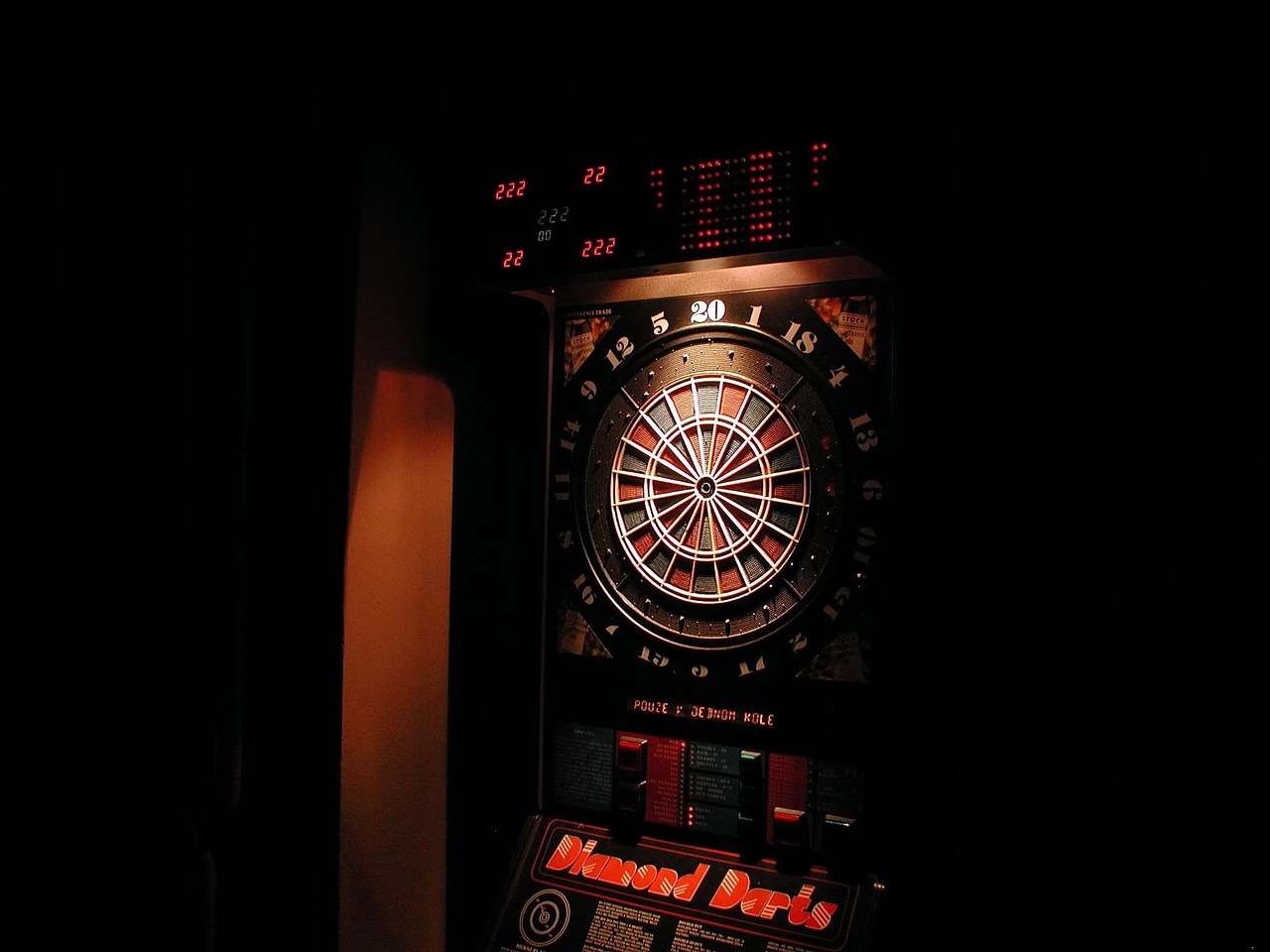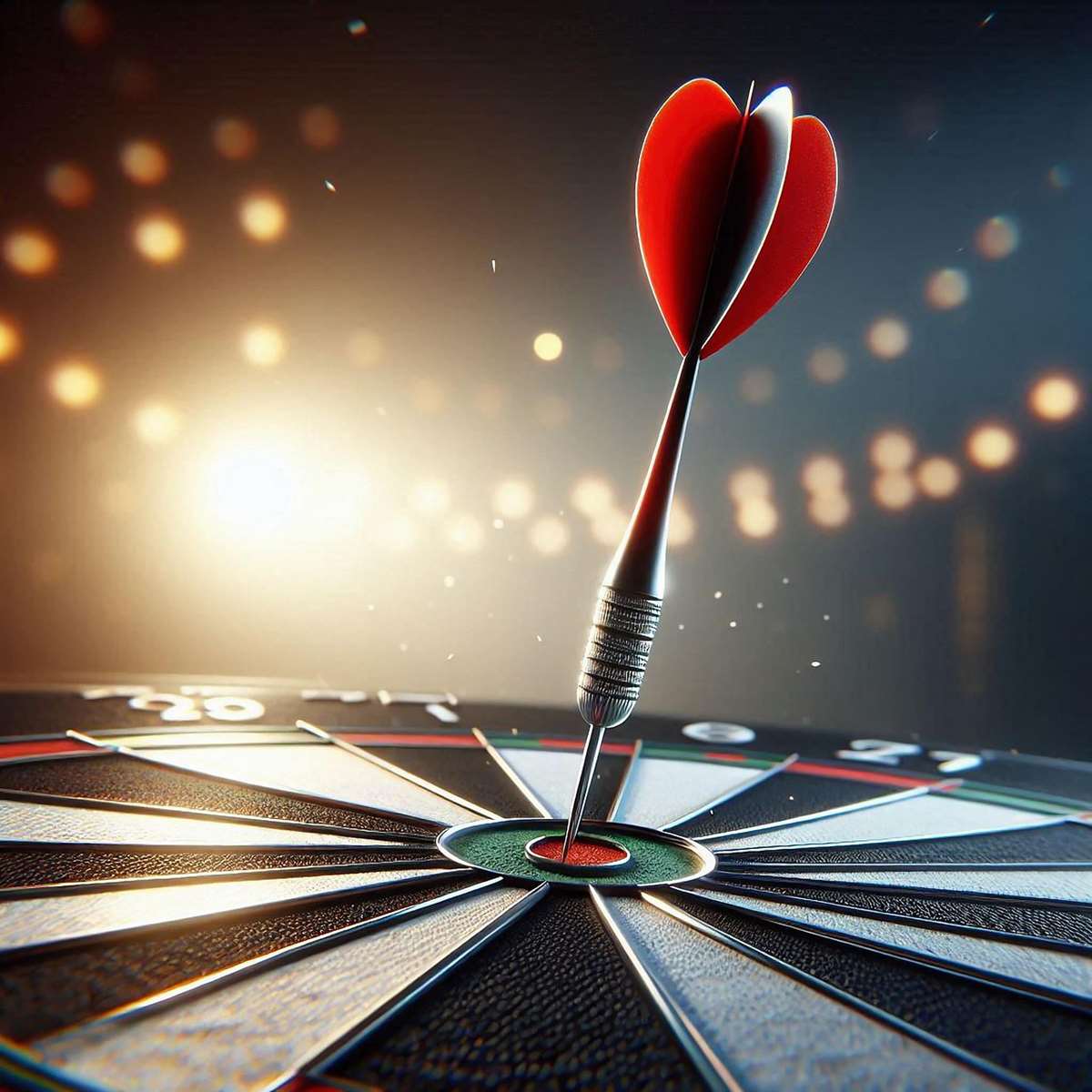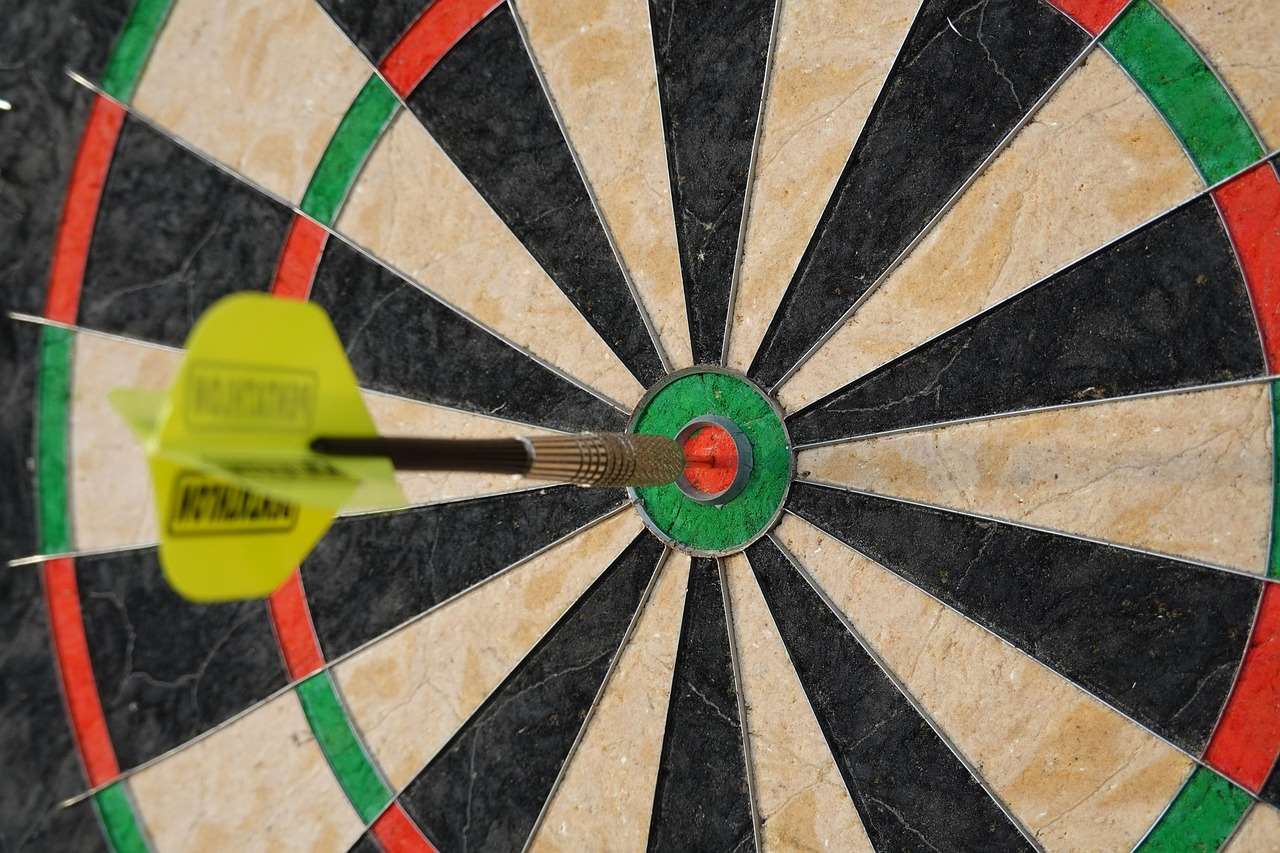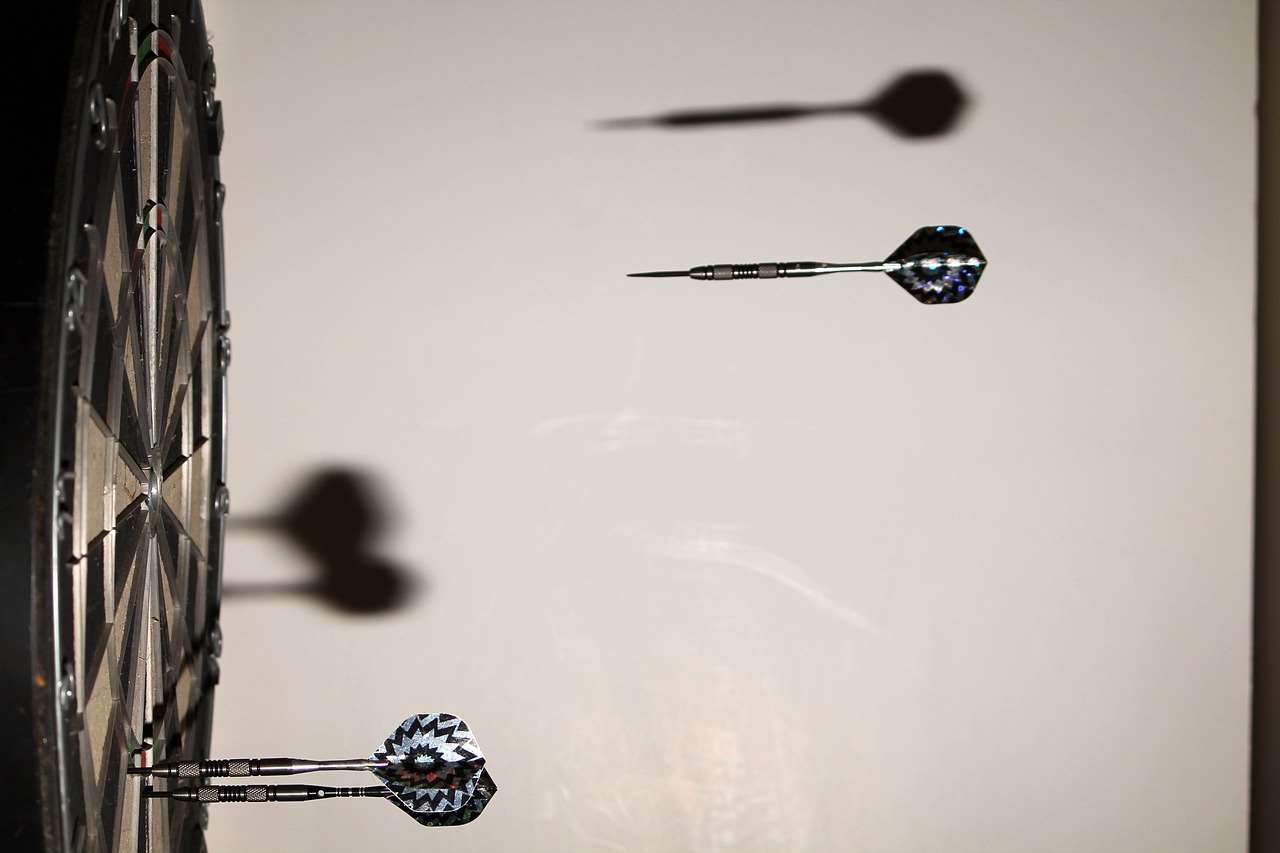Understanding a darts championship can seem daunting, but at its core, it’s a series of matches where players compete to reduce their scores to zero from a starting total, usually 501 or 301. This article will break down the rules, formats, major tournaments, and strategies involved in professional darts, giving you a comprehensive overview of the sport.
⚠️ Still Using Pen & Paper (or a Chalkboard)?! ⚠️
Step into the future! The Dart Counter App handles all the scoring, suggests checkouts, and tracks your stats automatically. It's easier than you think!
Try the Smart Dart Counter App FREE!Ready for an upgrade? Click above!
Darts Championship Explained: A Comprehensive Guide
If you’re new to the world of darts championship, or even if you’re a seasoned player looking to sharpen your knowledge, this guide will provide a detailed look into the mechanics, rules, and strategies that make professional darts so captivating. We’ll explore different tournament formats, scoring systems, and the nuances of the game that separate the pros from the amateurs. Learning how to throw a perfect dart consistently is crucial.
Understanding the Basics of Darts
The Dartboard
The standard dartboard is divided into 20 numbered sections, ranging from 1 to 20. These sections are further divided by wires into single, double, and treble areas. Hitting the double ring doubles the score of the section, while hitting the treble ring triples it. The bullseye is divided into two sections: the outer bullseye, worth 25 points, and the inner bullseye (double bullseye), worth 50 points.
Scoring in Darts
In most standard games, such as 501, each player starts with 501 points and must reduce their score to zero by throwing darts. The total score of the three darts thrown in a turn is subtracted from the remaining score. To win a leg (a single game), a player must finish on a double or the bullseye. This is known as a double out. For instance, if a player has 32 points remaining, they must hit the double 16 to win.
The Throwing Technique
The way you throw the dart significantly impacts accuracy. Most professional players adopt a stance perpendicular to the oche (the throwing line), maintaining a consistent grip and release. Practicing a smooth, controlled throwing motion and follow-through is essential for improved performance. Watching players at a darts championships stream will allow you to see these different techniques.

Major Darts Tournaments and Formats
The world of professional darts is dominated by several prestigious tournaments, each with its unique format and appeal. Understanding these tournaments provides insight into the competitive landscape of the sport.
PDC World Darts Championship
The PDC World Darts Championship is arguably the most prestigious tournament in darts. Held annually at Alexandra Palace in London, it features the top players from around the world competing for the coveted Sid Waddell Trophy. The tournament follows a knockout format, with matches increasing in length as the competition progresses. This championship is one of the best examples of darts championship explained.
Premier League Darts
The Premier League Darts is a weekly tournament featuring the top players in the PDC. Played across various cities in the UK and Europe, this event combines high-stakes competition with a vibrant atmosphere. The format involves a league stage followed by playoffs, culminating in a final to determine the champion.
World Matchplay
The World Matchplay is another major ranking tournament in the PDC calendar. Known for its grueling format, all matches are played as a ‘first to’ format, increasing in length as the tournament progresses. The longer format tests players’ stamina and consistency.
Other Notable Tournaments
- World Grand Prix: This tournament features a unique format where players must start and finish each leg on a double.
- UK Open: Known as the ‘FA Cup of Darts,’ this tournament features a random draw after each round, creating unpredictable matchups.
- Players Championship Finals: This event brings together the top performers from the Players Championship series, showcasing emerging talents and established stars.
The existence of all these tournaments means it is easy to find darts jokes one liners.
Darts Championship Explained: Tournament Structures
Understanding the structure of different tournaments is crucial for appreciating the strategic elements involved. The format can significantly influence player performance and match outcomes.
Knockout Format
The knockout format is the most common structure in darts tournaments. Players are drawn against each other, and the winner of each match progresses to the next round, while the loser is eliminated. This format is straightforward and creates a sense of urgency, as every match is critical.

League Format
In a league format, players compete against each other in a series of matches, earning points for wins and draws. The player with the most points at the end of the league stage is declared the champion. This format rewards consistency and provides a more comprehensive assessment of a player’s abilities.
Sets and Legs
Matches in darts are typically divided into sets and legs. A leg is a single game, starting from 501 (or 301) and finishing on a double. A set consists of a predetermined number of legs, and the player who wins the majority of legs in a set wins the set. Matches are often played as a ‘best of’ sets format, requiring players to win a certain number of sets to win the match.
Strategies and Techniques for Success
While natural talent plays a role, success in professional darts requires a combination of skill, strategy, and mental fortitude.
Practice and Consistency
Consistent practice is essential for developing accuracy and refining throwing technique. Professional players dedicate countless hours to honing their skills, focusing on repetition and muscle memory. Regular practice helps maintain consistency under pressure and improve overall performance. Ensuring you have the right winmau xtreme dartboard surround is important for this.
Mental Game
The mental game is crucial in darts. The ability to remain calm and focused under pressure, especially in crucial moments, can be the difference between winning and losing. Visualization techniques, positive self-talk, and managing anxiety are all important aspects of mental preparation.
Target Selection and Checkout Strategy
Choosing the right targets and planning a checkout strategy are essential for maximizing scoring opportunities. Players often aim for the treble 20 (T20) to quickly reduce their score, but also need to be mindful of setting up a favorable double to finish. Developing a clear checkout plan and adapting it based on the game situation is crucial. Using a Darts scorekeeper app such as the Darts Scorekeeper app (https://dartcounterapp.com/) can help you track and improve your checkout percentage.

Analyzing Opponents
Understanding your opponent’s strengths and weaknesses can provide a strategic advantage. Observing their throwing style, preferred targets, and mental tendencies can help you adapt your game and exploit their vulnerabilities. Studying past performances and match statistics can also offer valuable insights.
The Future of Darts
Darts continues to grow in popularity around the world, attracting new players and fans. With increasing media coverage and sponsorship opportunities, the future of the sport looks bright.
Technological Advancements
Technology is playing an increasing role in darts, with advancements in dartboard design, dart materials, and scoring systems. Electronic dartboards and online platforms allow players to compete remotely, expanding the reach of the sport. Data analytics and performance tracking tools provide valuable insights for players to improve their game.
Global Expansion
Darts is rapidly expanding beyond its traditional strongholds in the UK and Europe. The sport is gaining popularity in North America, Asia, and other regions, with new tournaments and leagues emerging around the world. This global expansion is creating new opportunities for players and fans alike.
Increasing Professionalism
The level of professionalism in darts continues to rise, with players investing more in their training, equipment, and support teams. Sponsorship deals and prize money are increasing, making darts a viable career option for talented individuals. This increasing professionalism is driving up the standard of play and making the sport more competitive than ever before.

Tips for Aspiring Darts Players
If you’re looking to improve your darts game and potentially compete at a higher level, here are some tips to help you on your journey:
- Invest in Quality Equipment: A good set of darts and a well-maintained dartboard are essential for improving your performance. Experiment with different dart weights and shapes to find what suits you best.
- Practice Regularly: Consistent practice is key to developing accuracy and consistency. Set realistic goals and track your progress over time.
- Join a Local League: Competing in a local darts league is a great way to gain experience and test your skills against other players.
- Seek Mentorship: Learning from experienced players and coaches can provide valuable insights and guidance.
- Stay Positive: Darts can be a challenging sport, so it’s important to maintain a positive attitude and learn from your mistakes.
Conclusion
In conclusion, understanding the nuances of a darts championship explained involves grasping the scoring system, appreciating the different tournament formats, and recognizing the importance of both skill and strategy. From the prestigious PDC World Darts Championship to local leagues, the sport offers opportunities for players of all levels to compete and enjoy the thrill of the game. By practicing regularly, honing your mental game, and analyzing your opponents, you can improve your performance and potentially make your mark in the world of darts. If you’re ready to take your game to the next level, consider joining a local darts club or league. The dart board gender reveal can also be a fun way to practice your aim.

Hi, I’m Dieter, and I created Dartcounter (Dartcounterapp.com). My motivation wasn’t being a darts expert – quite the opposite! When I first started playing, I loved the game but found keeping accurate scores and tracking stats difficult and distracting.
I figured I couldn’t be the only one struggling with this. So, I decided to build a solution: an easy-to-use application that everyone, no matter their experience level, could use to manage scoring effortlessly.
My goal for Dartcounter was simple: let the app handle the numbers – the scoring, the averages, the stats, even checkout suggestions – so players could focus purely on their throw and enjoying the game. It began as a way to solve my own beginner’s problem, and I’m thrilled it has grown into a helpful tool for the wider darts community.